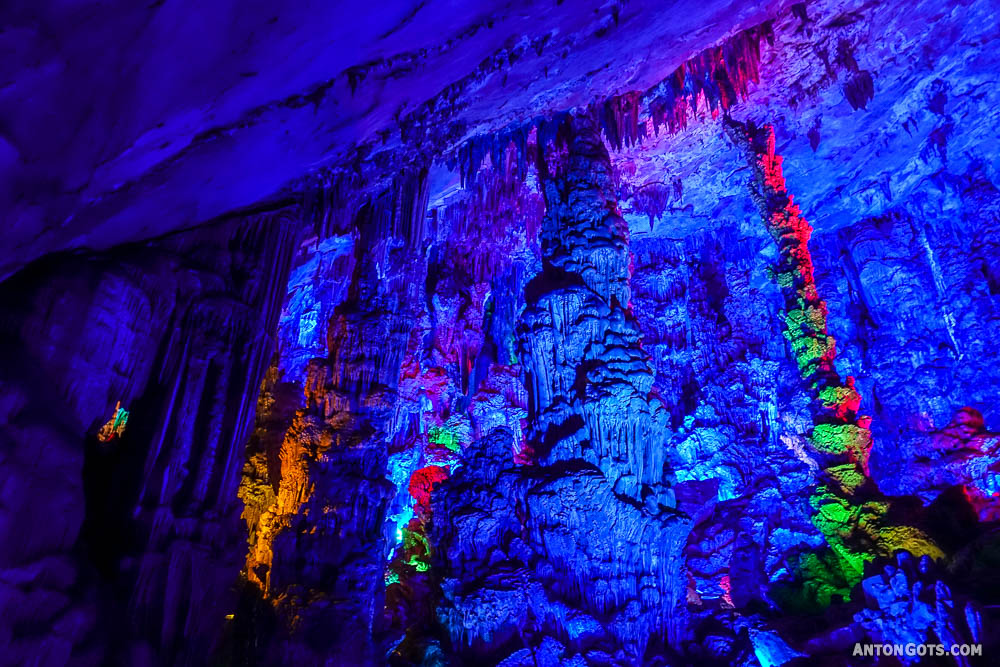
Two years after my first visit to the Chinese province of Guangxi I decided to return back and to discover more places. Like this 180 million years old Reed Flute Cave, located in the Chinese city of Guilin.
The cave got its name from the type of reed growing outside, which can be made into flutes. Reed Flute Cave is filled with a large number of stalactites, stalagmites and other rock formations. Inside the cave, there are over 70 inscriptions written in ink on the rock. These are poems written by people who visited the cave during the Tang Dynasty, and have been dated back as far as 792 AD. These aged inscriptions are a prove that the cave has been an attraction in Guilin since ancient times. It was rediscovered in the 1940s by a group of refugees fleeing the Japanese troops. Nowadays, multicolored lighting artificially illuminates the cave.

Reed Flute Cave is formed by long-term water erosion and carbonate deposition. The rocks inside the cave are mainly limestone. When the underground water flows, it dissolves the calcium carbonate inside the limestone. When the water containing calcium carbonate flows out from underground or drops out from cave roof, the water evaporate, only leaving calcium carbonate. After years of accumulation, stalactites form. Till today, these stalactites inside the cave are still “growing” as the water keeps dropping and flowing.
Entrance fee: I paid CNY 90. Opening hours are usually from 8am till 5pm. Visit goes with a tour groups and lasts for up to 1 hour, but you can take your time once inside. Midway through the cave, there is a large open room that offers a periodic video screening projected onto its stone ceiling and a hologram display of a Swan Lake ballet performance. In addition, the rock formations and their reflections in the river in this part of the cave make for some beautiful photo opportunities. The path inside the cave is wet and slippery in some places.




